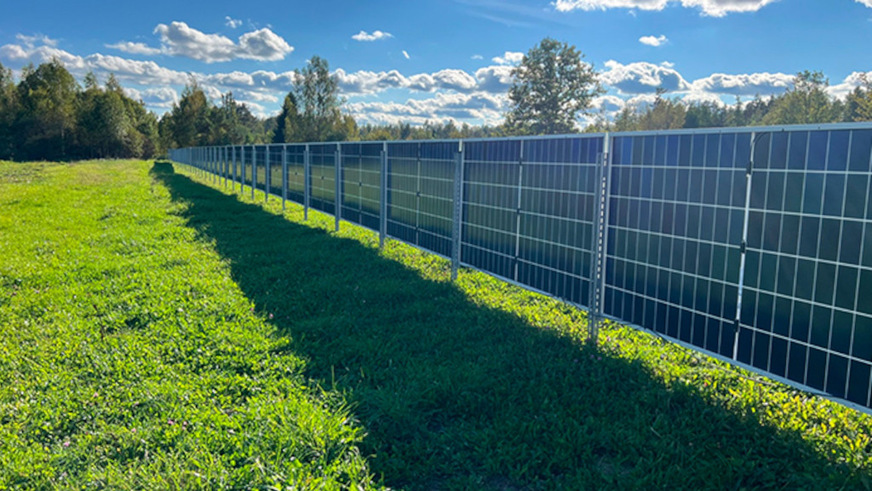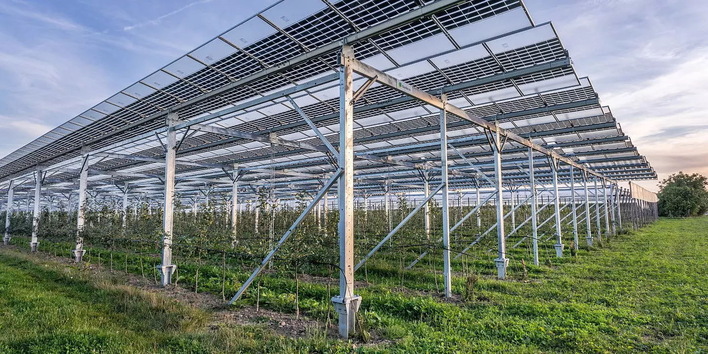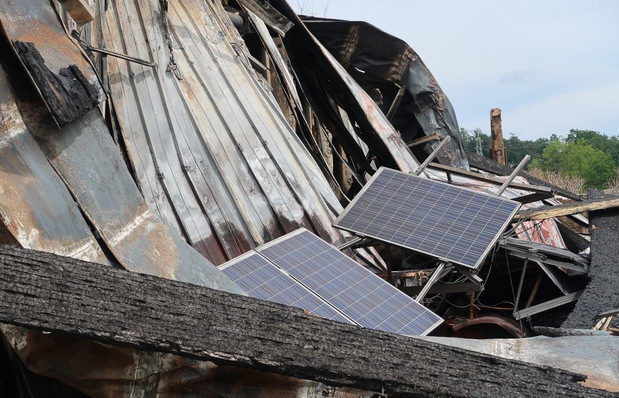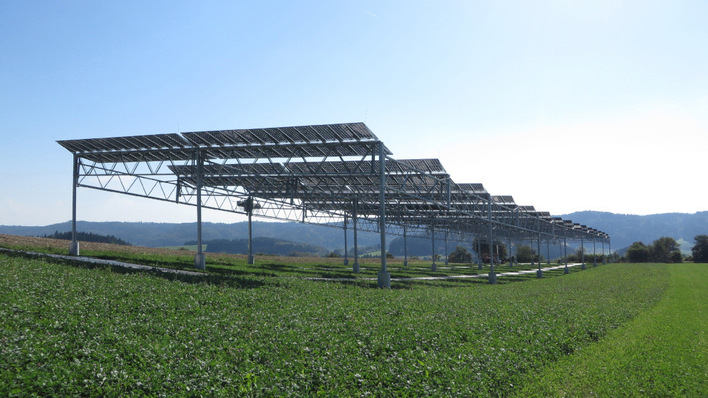Across Europe, most agrivoltaic installations prioritise agricultural activities that work seamlessly with PV operation rather than intensive crop production. Common examples include:
• Grazing by sheep, cattle or poultry
• Grass or hay cultivation
• Establishing pollinator-friendly cover crops
These practices help maintain the land’s agricultural classification, deliver ecological benefits and provide stable revenue streams. Landowners gain from electricity sales or leasing income while continuing traditional land use, supporting rural economies and preventing conversion to non-agricultural purposes. Dual land use can also create farming opportunities on land that might otherwise remain unused or be dedicated solely to energy production, such as narrow strips along railway tracks.
Solar solutions for farmers – tech and regulations in focus
Standard 2.1-metre mounting proves effective
A key takeaway from recent agrivoltaic projects is that costly custom-built structures are often unnecessary. Standard ground-mounted PV systems with a minimum clearance of 2.1 metres offer a reliable and effective solution.
This setup enables:
• Access for agricultural machinery such as tractors and mowers
• Supporting ground-level activities such as sheep grazing or low-lying vegetation
• Improved airflow and light dispersion, which can benefit soil health, reduce heat stress, and support local biodiversity
By using widely available components, developers reduce complexity, permitting challenges and costs – often enabling faster project deployment.
Recent installations show that innovative solar designs can meet both environmental and economic needs, turning open farmland into productive space for energy and agriculture. These projects demonstrate that solar can coexist with traditional farming, improving land-use efficiency without compromising food production and strengthening regional energy supply.
Solar Investor’s Guide #11: Agri-PV reimagines farmland for the future
In Adorf, Germany, a forward-looking solar project combines large-scale renewable energy generation with sustainable farming. The 15 MW installation, equipped with Trinasolar Vertex N modules, serves a dual purpose. On a dedicated 2 MW section, the modules are mounted high enough to allow agricultural use below. Cattle graze freely beneath the elevated solar structures, enabling simultaneous power generation and farming. The park has been connected to the grid since June 2025, with its energy capacity supplied directly to the grid.

Trinasolar
Another example is the 52 MW agri-PV project in Catania, Sicily, developed by Aquila Clean Energy. This utility-scale installation combines Vertex N large-format modules with crop cultivation, avoiding 24,000 tonnes of CO₂ emissions each year while supporting the growth of olive trees, herbs and legumes beneath the panels. Elevated structures and precise design ensure optimal sunlight for both plants and panels, making the site a model for multifunctional land use.
How crop and row spacing affect agri-PV yields
The advantage of glass-glass PV modules
Module selection is a key factor in agrivoltaic performance. Glass-glass PV modules, often paired with bifacial technology, offer greater durability, higher yields and longer service life than traditional glass-backsheet designs.
Key advantages:
• Structural stability, resistant to microcracks and moisture
• Low degradation rates (0.3–0.5 percent per year vs. around 0.7 percent for conventional modules)
• Service life exceeding 30 years, often backed by extended warranties
• Additional yield from bifacial light capture, particularly valuable when the ground remains uncovered
This robustness increases lifetime energy output and reduces replacement and maintenance costs, strengthening overall project economics.

Trinasolar
The Stariņi Solar Park in Latvia, equipped with 5,940 vertical bifacial modules and a 1,200 kWh energy storage system, combines innovation and sustainability by maximising energy output while preserving 98 percent of the land for agriculture. The park arranges bifacial modules in east-west facing rows to optimise energy capture from dawn to dusk. This design means vertical panels occupy just two percent of the site, leaving the remaining 98 percent available for agricultural use, striking an effective balance between green energy production and land resource optimisation.
Studies confirm water benefits of agri-PV systems
ROI: Built on durability and dual revenue
While upfront capital costs for agrivoltaic projects may be higher, particularly with premium modules and mounting systems, the long-term return on investment is strong:
• Extended system lifetime and lower degradation rates
• Dual income from electricity and agricultural production
• Reduced O&M costs and minimised component failure risk
Strong technical reliability and long warranties make these systems attractive to banks and insurers, reducing financing costs and project risks. The result is a higher and more predictable ROI throughout the system’s 30-year-plus operating life.
Subscribe to our our special newsletter PV for farmers
Conclusion: A smarter path to land optimisation
Agrivoltaics, using standard 2.1-metre mounting systems and durable glass-glass modules, is proving to be a scalable, financeable and sustainable solution for Europe’s energy transition. It avoids the pitfalls of specialised infrastructure, integrates with existing agricultural systems and delivers long-term returns.
As demand for land intensifies, this dual-use model offers a smart alternative: do not choose between energy and agriculture – harvest both.
As land becomes more contested and climate resilience more valuable, agrivoltaics is no longer just a niche – it is the smart way forward.
European countries are responding with supportive policies. France has launched tenders that specifically reward agrivoltaic installations, while Germany has introduced new regulatory categories and incentives for PV projects that maintain agricultural use. Italy and Spain are following with their own frameworks.
These measures reflect a broader policy shift – solar energy must expand without sacrificing productive rural landscapes. Agrivoltaics is increasingly viewed not as a compromise, but as a strategic asset. (Benjamin von Berg/hcn)









